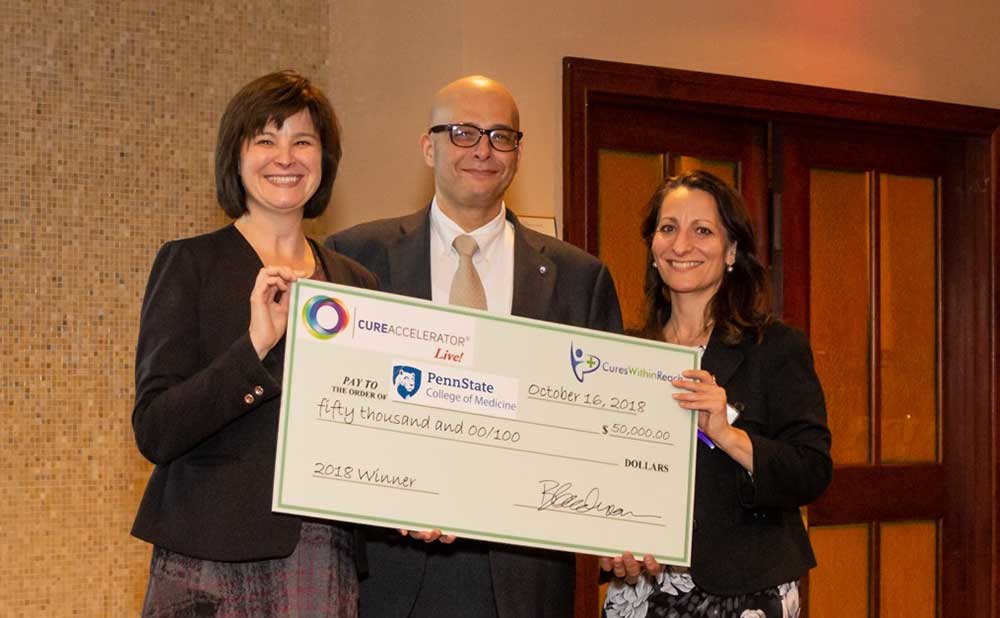Elfar’s severe limb trauma study wins CureAccelerator Live!

When a patient suffers a traumatic nerve injury, doctors can’t tell whether the nerve is crushed or severed without performing surgery.
Dr. John Elfar, an orthopedic surgeon at Penn State Health Milton S. Hershey Medical Center, hopes to change that.
His clinical trial, “Repurposing a Drug to Answer the Golden Question in Severe Limb Trauma,” won the 2018 CureAccelerator Live! philanthropic pitch event presented by Cures Within Reach on Oct. 17. The global nonprofit is dedicated to using repurposed therapies to treat unmet medical needs. As home to the winning project, Penn State College of Medicine will receive up to $50,000 in funding to support Elfar’s research.
View accessible video with audio description and transcript here
Elfar also serves as vice chair for research in the Department of Orthopaedics and Rehabilitation and director of the Center for Orthopaedic Research and Translational Science.
For the past six years, he has been testing whether 4-aminopuridyne (4-AP), a medication approved to treat multiple sclerosis, can also help diagnose the severity of a traumatic limb injury.
“Diagnosing the severity of a nerve injury can be incredibly complex,” Elfar said. “This award will help us fund a pilot study to see whether or not 4-AP can provide a single-drug diagnostic for nerve continuity in humans.”
Elfar’s study competed against three others at the CureAccelerator Live! Event – two from Johns Hopkins Hospital and one from Children’s Hospital of Philadelphia. The finalists attended the Collaborations Addressing Vulnerable Populations Forum in Herndon, Va., where forum attendees and expert panelists selected the winner.
“Recognition like this helps to raise the profile of Penn State College of Medicine, makes people nationwide aware of the important research being done here and offers hope for patients who suffer a traumatic nerve injury,” said Dr. Leslie Parent, vice dean for research and graduate studies at the College of Medicine.
Currently, Elfar and his team are using 4-AP to diagnose traumatic nerve injuries in animals. “We have done extensive studies and published a great deal of data on the utility of 4-AP and nerve injuries in rodents,” he said. “We’ve seen 4-AP wake up nerves in rats that were so completely crushed, we couldn’t stimulate them.”
The proposed pilot of 4-AP in humans is currently under review with the U.S. Food and Drug Administration and Penn State institutional review board. If approved and successful, the pilot could lead to trials for several related indications.
Drug repurposing studies such as Elfar’s help to turn medical research into evidence-based treatment sooner. “Because drugs like 4-AP are already approved for other indications, the pathway for approval is often faster,” Parent said.
As a Level 1 Trauma Center, Hershey Medical Center participates in leading-edge research to help develop new innovations in trauma care.
If you're having trouble accessing this content, or would like it in another format, please email the Penn State College of Medicine web department.
